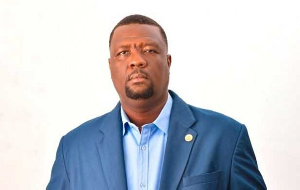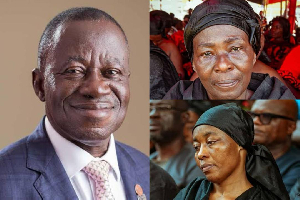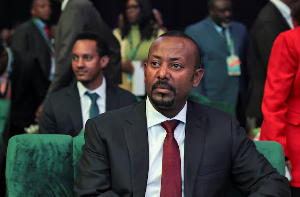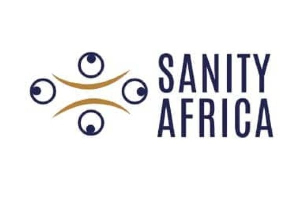The Ghanaian Chronicle?s intensive investigation have revealed that the Ghana Water Company Limited (GWCL) from its two booster stations at Ashaiman and Okponglo has been releasing water to the Accra-Tema Metropolitan Area (ATMA) without undertaking post-chlorination treatment.
This is because the chlorinators have broken down long ago and a substituted bleaching powder has also run out of stock at the two stations.
The paper?s investigations uncovered that the GWCL treats water at the Kpong headworks and first pumps it to the Ashaiman Booster Station (58km) to store 12.5m gallons capacity reservoir.
Here post-chlorination treatment takes place to destroy bacteria that may develop through the pipelines, other foreign materials and odour also likely to crop up. initially, post-chlorination was done through the injection of chlorine gas but for sometime now the equipment for that broke down and in place, bleaching powder is used to treat the water.
The Ashaiman plant was dosing 16 drums of bleaching powder daily but this was reduced to 12 drums later. Since August last year, the Ashaiman (Tema) plant has not been dosing at all due to a shortage of the chemical at the station.
At Okponglo station, with a 10m gallon-storage capacity, The Chronicle?s undercover investigations revealed that the last six drums of bleaching powder were dosed in the Christmas holidays and since then, water to the eastern part of Accra is delivered without post chlorination treatment. Water at Okponglo is supplied from the Tema plant, about 33 kilometres away.
Enquiries revealed that apart from the First Battalion of Infantry (1BN) at Michel Camp, which takes its supplies from the mainline, Ashaiman, the entire Tema Municipality, Teshie/Nungua, Prampram, Katamanso, Afienya, Ningo and outlying towns are fed from the Ashaiman plant.
The Kpong headworks pumping between 30m and 35m gallons daily was constructed in 1996 alongside Ashaiman and Okponglo plant by STEPRE of German and witnessed major rehabilitations in 1995.
The Ghanaian Chronicle?s findings also disclosed that for a long time, the chambers of the two booster stations have not been washed, resulting in the alleged flow of foreign materials through some taps, especially, anytime water begins to flow after closing the taps.
The Chief Executive Officer (CEO) at the GWCL, Jonathan Nunoo, is reported on a Tema radio station as saying that the nation orders the bleaching powder from India and Dubai and the vessel owners were not prepared to transport the items because they consider it hazardous a commodity.
Those ready to convey it also do so at cut-throat prices. Nunoo stated that the quality of water his company is delivering to the Accra Tema Metropolitan Area is within the Ghana Standards Board specification.
A few days later, the Public Relations Officer (PRO) of the company, Michael Agyeman, was also reported on the radio station as saying that the GWCL has enough bleaching powder in stock that can last for six months.
The PRO mentioned its Central Stores at Mile 18, Ashaiman roundabout, as the place storing the chemicals. Agyeman said that various stations make requisitions for items needed and supplies are then made.
The Ghanaian Chronicle?s further enquiries revealed that upon taking stock of chemicals, allocations are made rather than requisitions. It revealed that the company falls on the local representation of the supplies MES Co Ltd., in time of shortage of items which are sometimes delivered after a little delay.
Official sources within the GWCL, told the paper that probably, the fact that private participation in the water sector is scheduled for July is the cause of officials not willing to inject money into the operations of the company again for the purchasing department is informed of the need to procure new chlorinators.
The inside sources who pleaded anonymity suggested that the government should ensure an investigation into why the two booster stations are not supplied with bleaching powder which is a substitute for chlorine gas whose operating plants have broken down.
It went on to say that, the chemical treatment at Kpong, after travelling the distance to Ashaiman loses its efficacy and that the absence of post-chlorination is dangerous. The paper was told that the present situation can easily bring about cholera, diarrhoea, dysentery and guinea worm diseases.
In a related development, the Chronicle learnt that the present crisis facing the GWCL can duly be solved if expansion works take place to beef up the old plants at Kpong, Ashaiman and Okponglo. Their capacities were designed to meet population of that time, Chronicle was told.
Meanwhile, the Tema Municipal CEO, Evans Ashong Narh, has appealed to the GWCL, to protect its property from encroachment. Ashong Narh said this in response to a question as to why the TMA seems to look on unconcerned as developers encroach upon the GWCL land housing the booster station at Ashaiman. The place has also become a defecating area for residents nearby.
General News of Tuesday, 4 February 2003
Source: Chronicle












